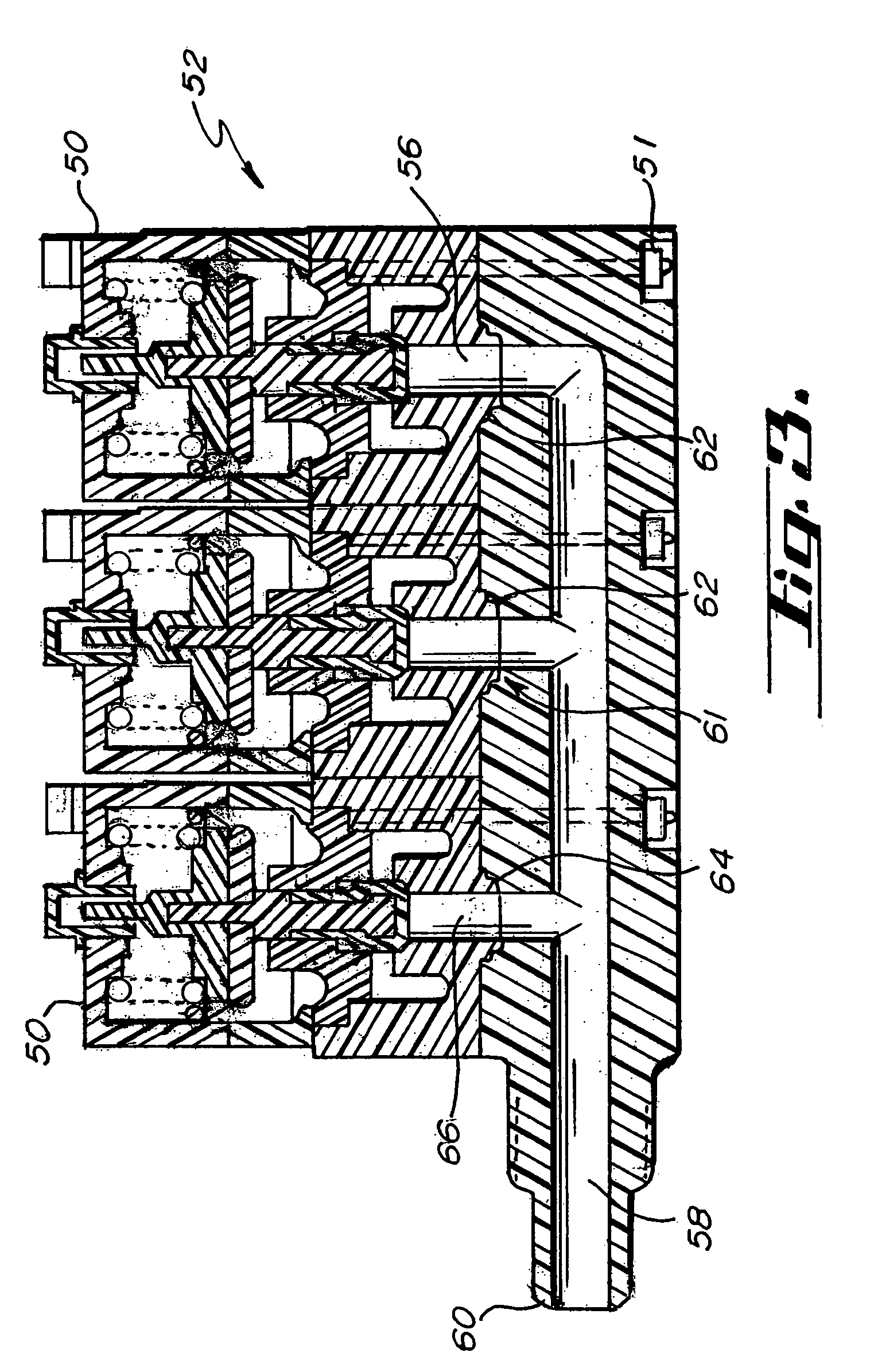Component to component sealing method
a technology of components and sealing methods, applied in the direction of valve housings, hose connections, manufacturing tools, etc., can solve the problems of compromising the integrity of the connection, difficult to properly align the mating pieces, and high cost of o-rings, so as to reduce the risk of o-ring damage, reduce the credibility of compression, and facilitate manufacturing
- Summary
- Abstract
- Description
- Claims
- Application Information
AI Technical Summary
Benefits of technology
Problems solved by technology
Method used
Image
Examples
Embodiment Construction
[0036]The plastic coupling according to the present invention can be used in a variety of applications, such as for coupling two tubular pipe portions for coupling tubular pipe portions to items such as valves or manifolds, or for coupling a valve to a manifold.
[0037]Referring to FIGS. 2, 3 and 4, valves 50 mounted on a manifold 52, in accordance with one embodiment of the invention, are illustrated. The valves 50, in this embodiment are shown as diaphragm valves conventionally pneumatically operated and have two flow ducts which for purposes of illustration are designated as a fluid inlet 54 and a fluid outlet 56. Obviously, the fluid flow can be in either direction. The manifold 52 may be configured substantially as a block 51 with a fluid flow path 58 extending therethrough. The block manifold 52 at the bore 58 may be connected with a FLARETEK® type coupling 60 known in the industry. Similarly each valve inlet may be suitably attached to tubing by way of FLARETEK® connections 60....
PUM
| Property | Measurement | Unit |
|---|---|---|
| compressive force | aaaaa | aaaaa |
| shape | aaaaa | aaaaa |
| pressure | aaaaa | aaaaa |
Abstract
Description
Claims
Application Information
 Login to View More
Login to View More - R&D
- Intellectual Property
- Life Sciences
- Materials
- Tech Scout
- Unparalleled Data Quality
- Higher Quality Content
- 60% Fewer Hallucinations
Browse by: Latest US Patents, China's latest patents, Technical Efficacy Thesaurus, Application Domain, Technology Topic, Popular Technical Reports.
© 2025 PatSnap. All rights reserved.Legal|Privacy policy|Modern Slavery Act Transparency Statement|Sitemap|About US| Contact US: help@patsnap.com



